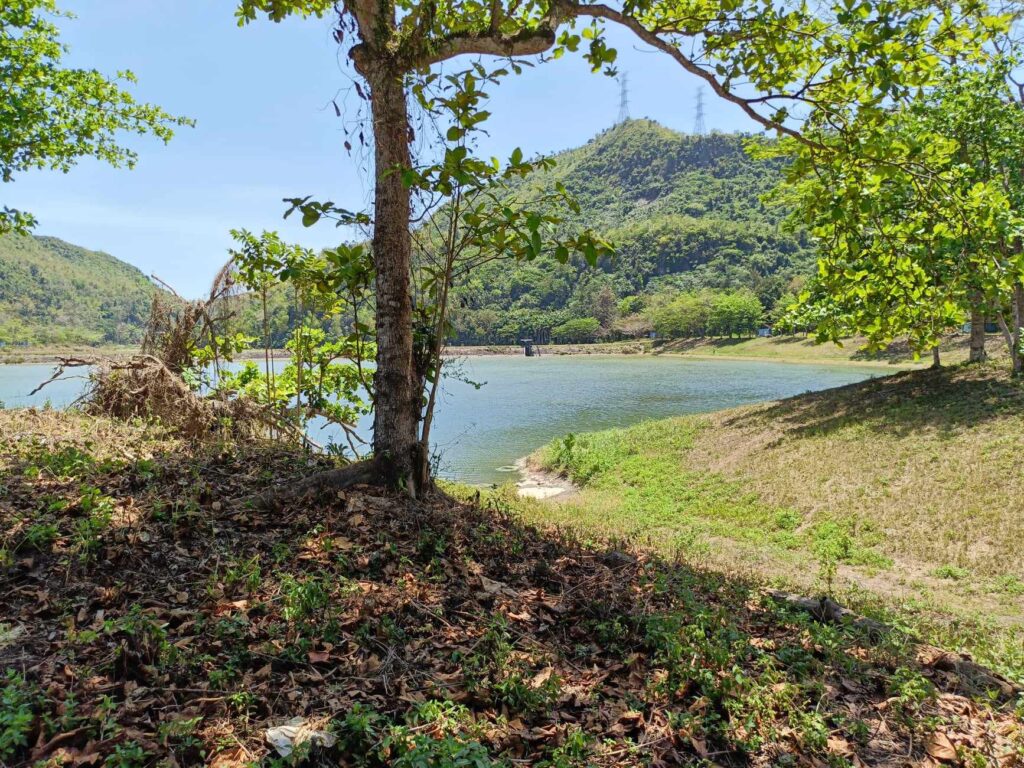Cebu City: Water crisis eases as La Niña brings rain

The dry spell has significantly hit the production of one of MCWD’s water facility in Jaclupan. | Contributed photo/MCWD Public Information Division
CEBU CITY, Philippines – The long drought brought by El Niño may finally be coming to an end as La Niña ushers in much-needed rain to Cebu City.
The Metropolitan Cebu Water District (MCWD) reports improvements in water production across its sources, which provides a glimmer of hope for residents who have endured prolonged water shortages.
Over the past two weeks, consistent rainfall has led to improvements in the water supply.
READ MORE:
MCWD water deficit now affects 50,000 households in Metro Cebu
Water crisis escalates in Cebu City: Bureaucratic delays hamper desalination projects
According to MCWD spokesperson Minerva Gerodias, the Compostela water supply, which had ceased operations in March due to dry conditions, has nearly returned to normal levels.
The supplier, which has a contract to deliver 10,000 cubic meters of water per day, is now supplying almost 9,000 cubic meters daily.
The Lusaran Dam, a crucial source for areas such as Busay and Lahug, experienced a drop during the El Niño period, falling from 22,000 cubic meters to just 19,000 cubic meters per day. However, recent rains have increased the supply back to 19,000 cubic meters, with expectations to reach the normal 22,000 cubic meters soon.
“Ma feel na gyud sa mga tao nga naa na silay tubig,” Gerodias said.
(People can now feel that they really have water.)
READ MORE:
DENR wants water districts to own refilling stations
Similarly, the Lusaran source, which also serves the Pit-os area,which had dropped to 2,000 cubic meters, has now recovered to 6,600 cubic meters, nearing its regular supply of 8,000 cubic meters.
Residents in these areas have started to feel the positive effects of these improvements.
Moreover, the Jaclupan Dam, which normally produces 30,000 cubic meters of water per day, had its output halved to 15,000 cubic meters due to the drought. As of the second week of June, Gerodias reported that production is 14,197 cubic meters, almost reaching half of its normal capacity.
Despite these improvements, the Buhisan Dam remains a concern. Gerodias said, the dam, which typically produces 6,000 cubic meters per day, has yet to recover and remains dry.
Gerodias explained that the recent rains have not been sufficient to raise the water level in Buhisan Dam to a productive state. The rainwater seems to have been concentrated in other areas, which leaves Buhisan without enough inflow.
“Ubus pa gyud siya kaayo, dili pa siya enough for production,” Gerodias remarked.
(It is still low, it is still not enough for production.)
In addition to the improvements in natural water sources, MCWD’s desalination initiatives are showing promise.
The desalination plant in Opao, Mandaue City, commissioned with an initial contract to produce 10,000 cubic meters per day, has nearly reached 9,300 cubic meters. Gerodias said fine-tuning is ongoing, with expectations of reaching full capacity soon.
Furthermore, another desalination plant in Mambaling, Cebu City is set to be commissioned on June 22, 2024, adding another 10,000 cubic meters to the water supply.
MCWD is also making progress on infrastructure projects.
On May 26, Governor Gwen Garcia signed the necessary permits for pipeline construction. Contractors have begun pipe laying, with completion expected in six to eight months. This project will benefit several barangays, including Binaliw, Cambinocot, Guba, Angsungot, portions of Busay, and Apas.
Meanwhile, residents have already begun to feel the relief brought by the rains and improved water supply.
Gerodias noted an influx of messages from grateful citizens who now have access to water again. However, she cautioned that heavy rains could temporarily disrupt supply due to turbidity issues, particularly in open sources like Compostela and Carmen rivers.
These sources may need time for sediment to settle before the water can be processed and distributed.
Disclaimer: The comments uploaded on this site do not necessarily represent or reflect the views of management and owner of Cebudailynews. We reserve the right to exclude comments that we deem to be inconsistent with our editorial standards.
